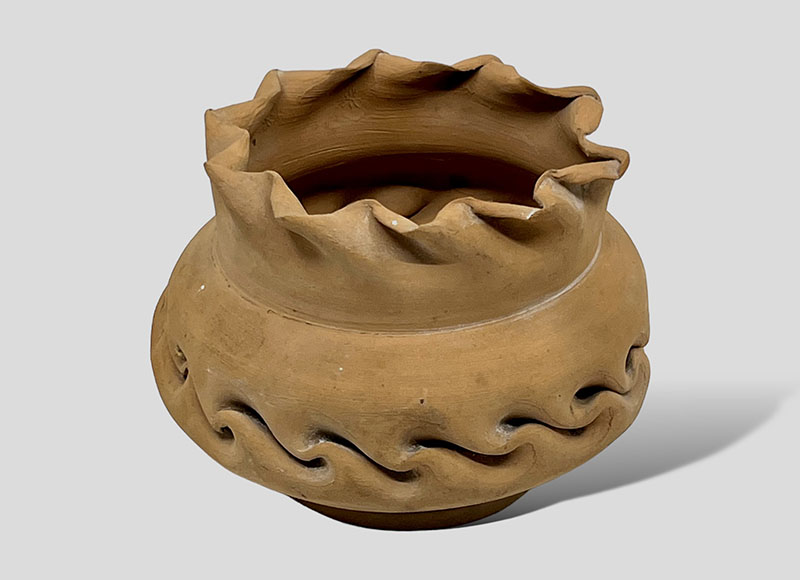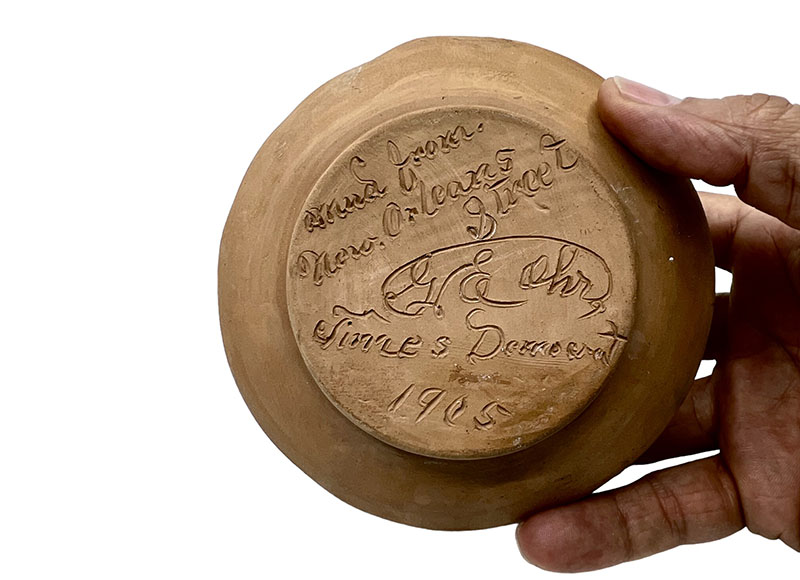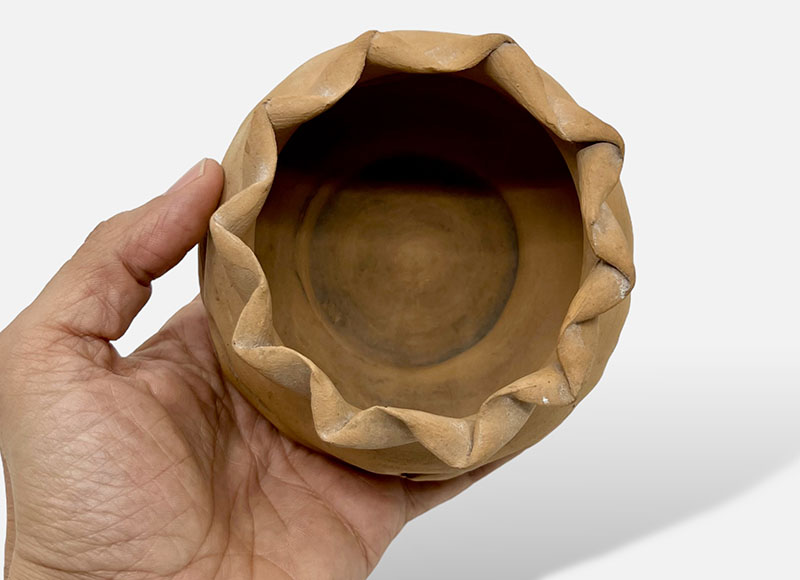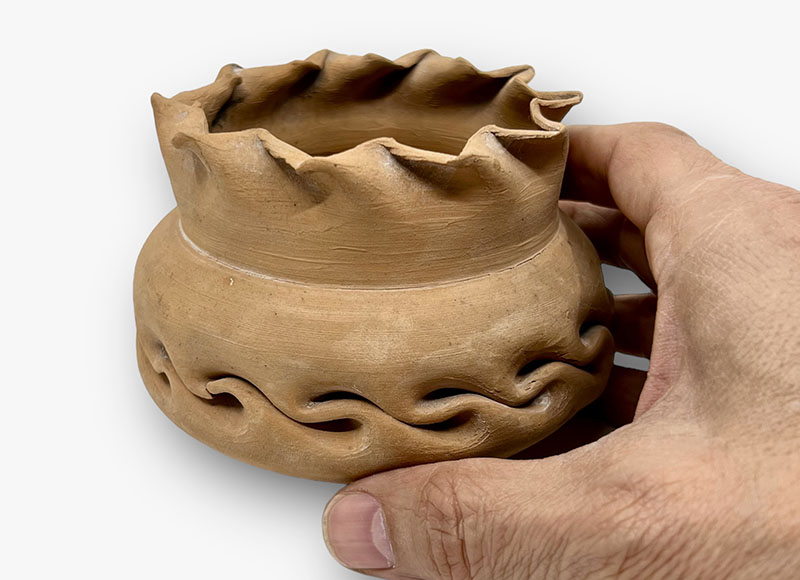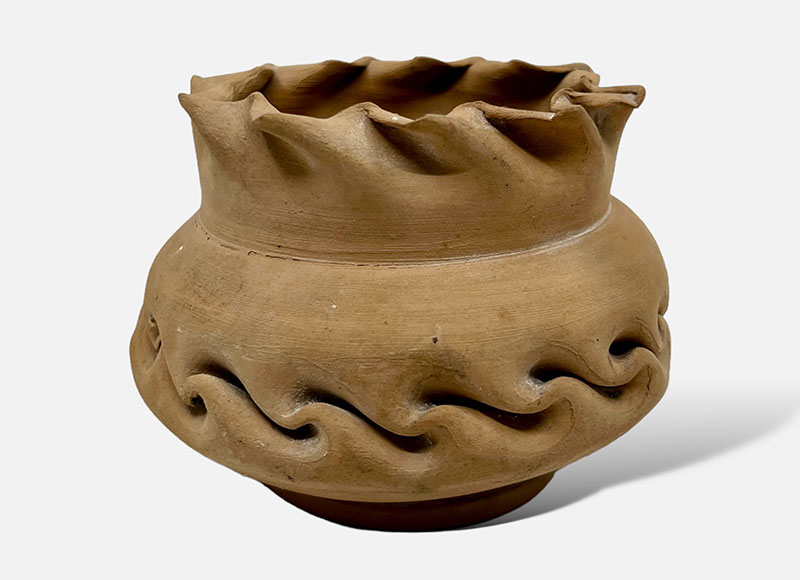- HOME
- INVENTORY
- GALLERY
- BOOKS
- CATALOGS
- ABOUT & MORE
- CONTACT
Contact Us
George Ohr (American 1857-1918) | Signed Bisque Pot
Signed to underside: "Mud from New Orleans Street I G.E. Ohr I Times Democrat 1905"
Bisque fired earthenware
Circa: 1905
Size: 3 1/2" x 4 7/8" | 8.9 x 12.4 cm
CLICK HERE to see and Instagram Reel discussing this work.
"Mud From New Orleans Street." Though known as "The Mad Potter of Biloxi," George Ohr apprenticed as a potter in New Orleans, and this inscription gives an homage to his artistic roots. Ohr uses the word "mud" to reinforce his medium's humble origins.
To say that George Ohr was an unconventional potter is an understatement. After a devastating fire in his studio in 1894, in which he lost nearly everything, he saw clay not as a medium for utilitarian pottery but as a medium for ceramic sculpture. In fact, after 1903, Ohr mostly abandoned glazes as he felt the colors interfered with the sculpture of his forms, saying, "God put no color or quality in souls, so I'll put no color on my pots."
In addition to "Mud from New Orleans," the underside of this beautifully manipulated pot with in-body twists and ruffled rim has Ohr's beautifully scripted signature, is dated 1905, and states "Times-Democrat." Here, Ohr refers to a New Orleans newspaper and hints at his political awareness. Ohr leaned left and was affiliated with the Mississippi Socialist Party of America. He also contributed to The Appeal to Reason, a socialist newspaper.
His pots embodied his unconventional views and challenged the norms of his time. They exhibit the value of individualism and a rejection of conformity. His improvised and distorted forms protested against the homogenization of culture and the commodification of creative labor.
Ohr is seen as the father of ceramic sculpture. His pioneering approach is a precursor to Abstract Expressionism in painting. His daring, unorthodox methods continue to inspire contemporary artists and personalities.
Provenance: Collection of Dr. Ellis F. Rubin and Suzanne Borow Rubin
Condition: Excellent with a couple minor flea sized chips.
Price: $10,800.00

ALL ITEMS GUARANTEED AS REPRESENTED
STEVEN S. POWERS • 53 STANTON ST, NY, NY 10002 • 917-518-0809 • email: steve@stevenspowers.com • © all rights reserved

